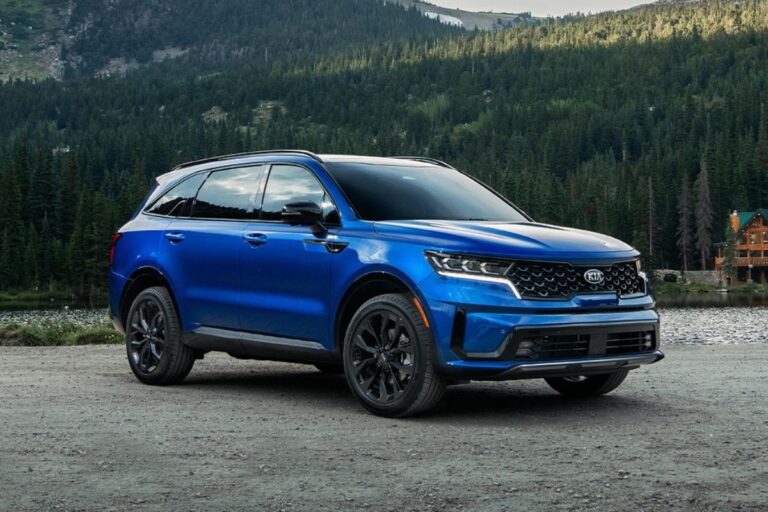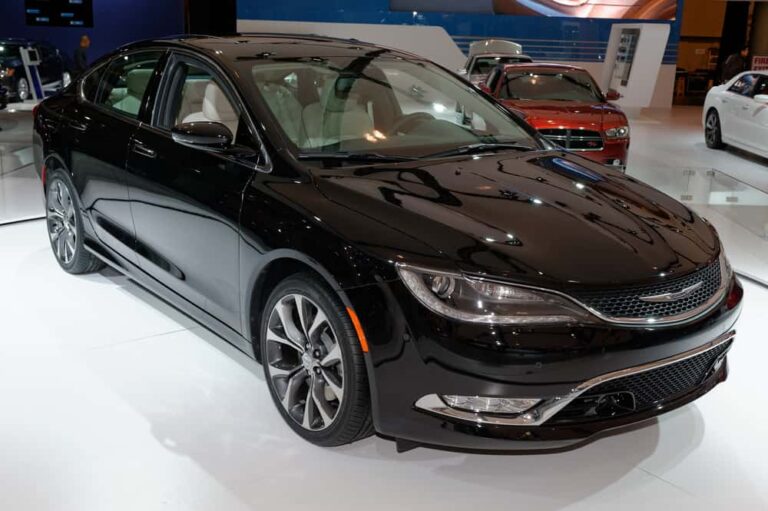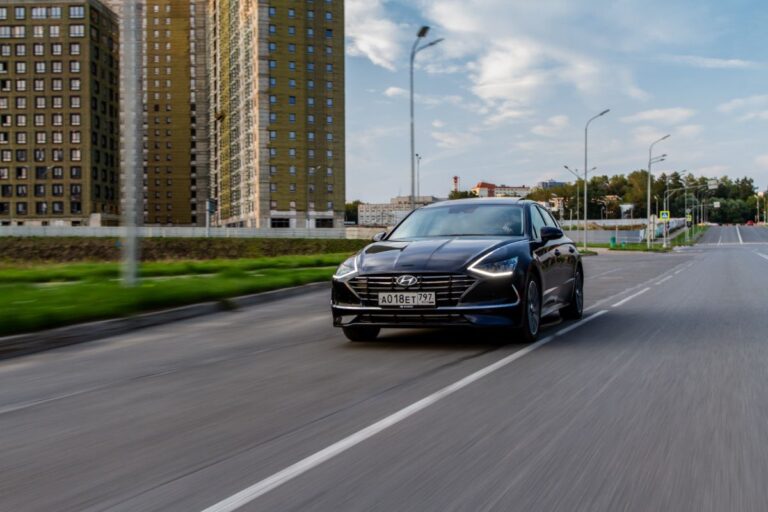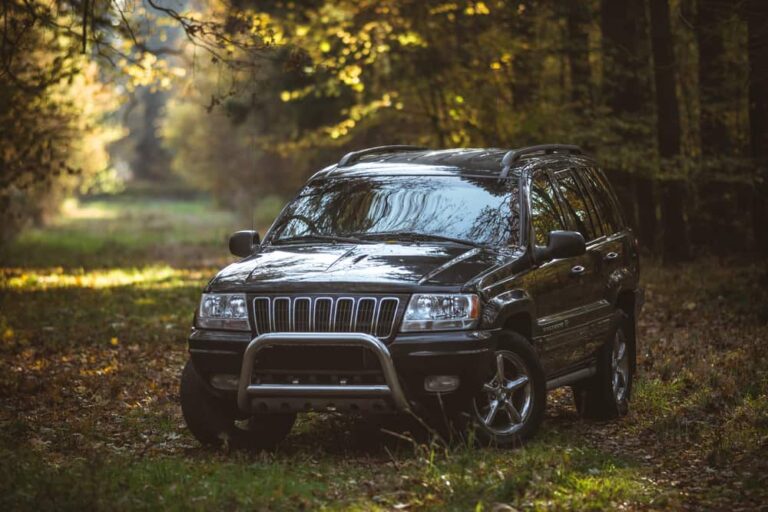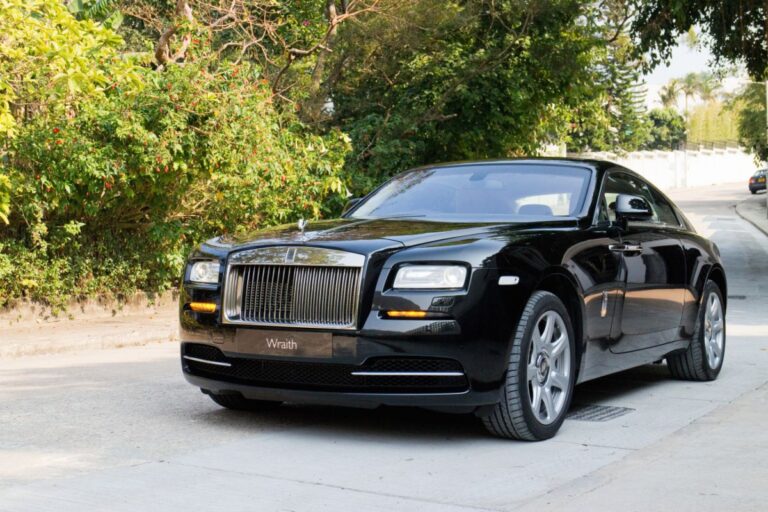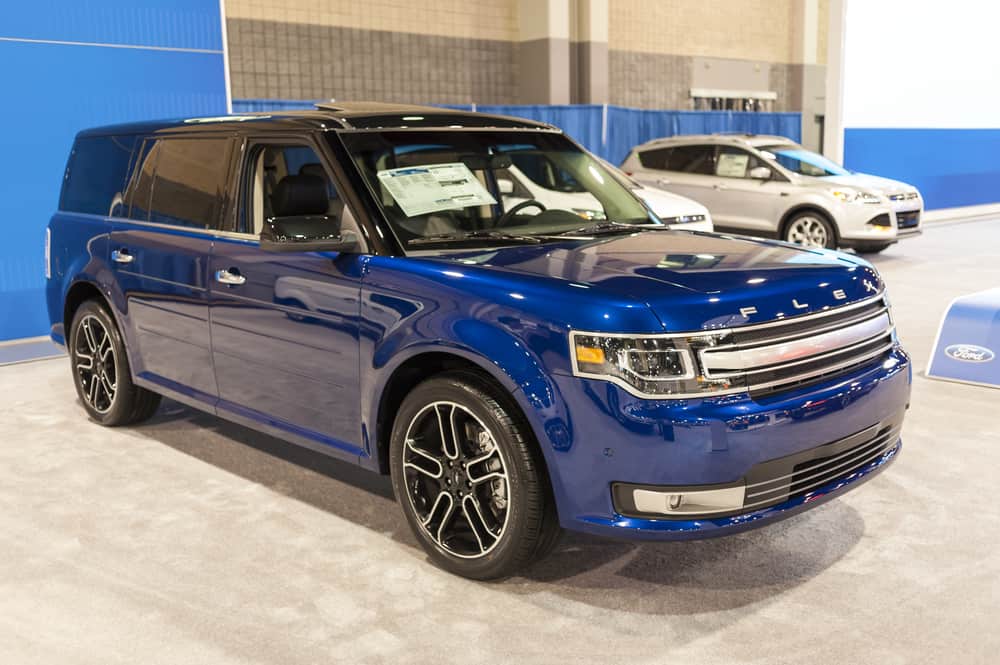
Part SUV and part station wagon, the Ford Flex occupies an interesting in-between spot as far as vehicles go. Although discontinued as of 2019, the Ford Flex is a large crossover SUV that offers a good balance of interior space and power from its optional turbocharged 3.5-liter V6 that is good for 365 hp and 350 lb-ft of torque. But how does it stack up to other large crossovers and full-size SUVs? Let’s take a look.
13 Vehicles Similar to the Ford Flex
1. Toyota Highlander
2. Honda Pilot
3. Chevrolet Traverse
4. Hyundai Palisade
5. Buick Enclave
6. Cadillac XT6
7. Audi Q7
8. Toyota Sequoia
9. Lexus GX
10. GMC Yukon
11. Volkswagen Atlas
12. Subaru Ascent
13. Nissan Pathfinder
Top 3 Vehicles Similar to the Ford Flex
1. Toyota Highlander
2. Honda Pilot
3. Chevrolet Traverse
Details About the Ford Flex
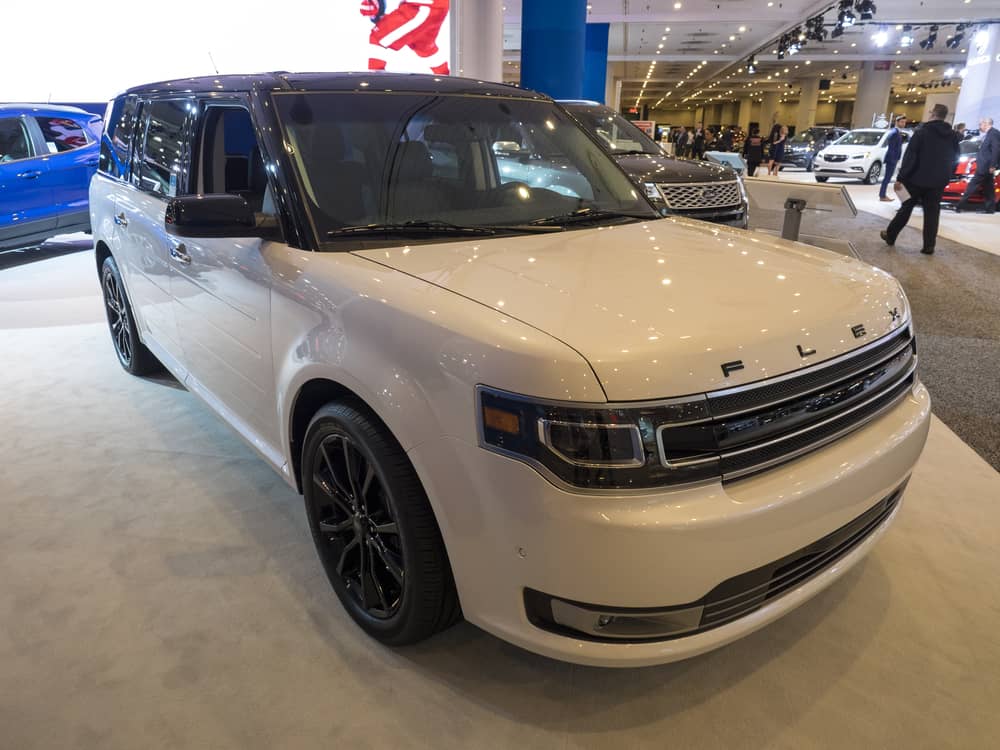
Let’s start things off by talking about the details of the Ford Flex, taken from its final production year – 2019. This vehicle comes with three trim level options: the base SE, the mid-tier SEL, and the line-topping Limited. Each one is equipped with a standard 3.5-L V6 engine that is able to produce 287 hp and 254 lb-ft of torque.
The Limited can optionally come with a turbocharged version of this engine that ups the power output to 365 hp and 350 lb-ft of torque, making for quite the impressive boost. A 6-speed automatic transmission comes with either of these engines and while front-wheel drive is standard, all-wheel drive is optional for the SEL and Limited trim levels.
For being such a big vehicle, the Ford Flex is able to sprint to 60 miles per hour in a respectable time of 6.2 seconds with EcoBoost equipped. That makes it faster than most mini-vans or crossovers. The Flex tends to drive like a smaller vehicle, meaning that you will not feel like it is encumbered with just one or two people riding in it.
While not the most nimble of vehicles, the Flex does not lean like taller SUVs do, and this makes for better handling.
Spaciousness and utility are where the Ford Flex really outshines the competition. Getting in an out of this vehicle is remarkably easy since you do not have a sill to step over and the doors open out wide. Even accessing the third row takes less effort than it does in other third-row vehicles.
The first and second rows elicit plenty of space for their occupants, and even the third row feels cozy enough for smaller adults and children. When it comes to utility, it is hard to best the Flex’s flat load floor and boxy shape. These make it easy to load multiple bulky items.
The Ford Flex’s cost is respectable too. For a 2019 Ford Flex, expect to pay anywhere from $24,671 – $37,888 starting MSRP. Prices tend to fall about $500-1,500 below market value, which means that dealerships are pricing these used vehicles to sell. Considering that competitors like the 2019 Honda Pilot tend to go for about $3,000 more, the Ford Flex is a relatively affordable option.
Toyota Highlander
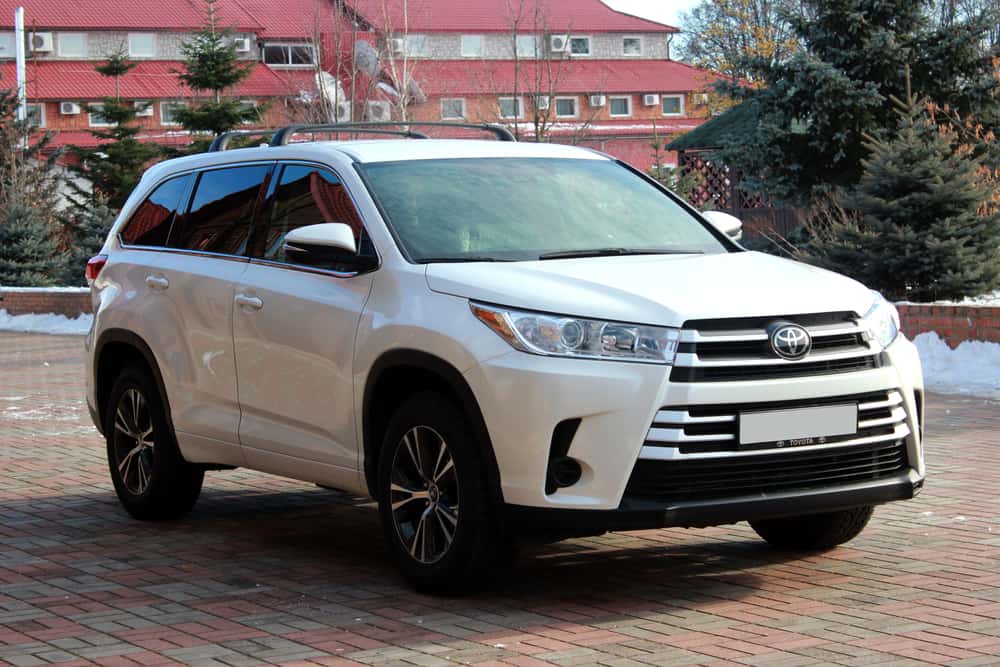
The Toyota Highlander is hailed as one of the top family-haulin’ third-row crossover SUVs. It is similar in size to the Ford Flex but lacks the Flex’s distinctive boxy style. Like the Flex, it offers a powerful V6 engine option that generates 295 hp and 263 lb-ft – but that means paying more to avoid the weaker 2.5-liter four-cylinder engine (which only musters up 185 hp and 184 lb-ft of torque).
Stylistically, the Highlander is more in-line with what we expect a crossover SUV to look like. It lacks the boxy shape that some buyers find unattractive. It has more sloping lines, but they are not entirely overwhelming in their undulations.
The front end actually retains something of a square shape and does not come off as aggressively as other SUVs. Unfortunately, going with a curvy design like this means losing out on some cargo space and room in the third row.
The 2019 Highlander can make it from 0 to 60 miles per hour in 7.9 seconds at its fastest time – almost a second and a half slower than the Ford Flex. The revamped Highlander from 2020 only saw a boost in .4 seconds. Even though you spend a lot more for the upgrade to the V6 on the Highlander, you just do not get the same amount of snappiness from the engine that the Flex’s turbo V6 displays.
And, as far as all third-row SUVs in this segment go, the Highlander slides right into the middle of the pack with this time. You have to go midrange with the power in order to truly feel anything exciting, which makes slow-rolling on the gas pedal somewhat uninspiring.
The Highlander tends to price above other vehicles in its segment too. A 2019 Highlander can price from about $30,500 – $42,500, which might be out of the price range of the average buyer. The higher you go in trim levels, the more expensive the Highlander becomes.
Torque-vectoring all-wheel drive is available for the Highlander, but front-wheel drive is the standard drivetrain. When it comes to fuel, the FWD is definitely more savvy. The AWD Highlander returns 23 mpg (with 20 city/27 highway) while the FWD clocks in at 24 mpg (21 city/29 highway).
In such a competitive segment as this, even just 1 or 2 mpg in difference is important to buyers. Of course, buyers who want to leave a smaller fuel imprint can opt for the Highlander Hybrid, which gets a combined 35 mpg on the AWD models and 36 mpg combined on the FWD versions.
Towing numbers are industry average on the Highlander. When properly equipped (with the AWD and tow package), the Highlander can tow up to 5,000 pounds. Without them, the limit is 3,500 pounds. The payload capacity ranges from 1,485 to 1,685 lbs. This does make it easy enough to pull around an airstream, teardrop, or pop-up trailer.
Honda Pilot

The Honda Pilot is one of the best-selling third-row SUVs on the market. It favors a more crossover SUV-like design than the Flex, making it somewhat more stylistically akin to the Toyota Highlander. Inner versatility puts the Pilot right on point with the Flex, possibly even besting it thanks to Honda’s one-touch slide-and-fold second-row seats.
Both come with many of the same features, although adaptive cruise control is standard on the Pilot and optional on the Flex.
The Honda Pilot might not be as boxy as the Flex, but it has a slightly boxier look than the Toyota Highlander since its rear roofline does not slope down as much. The Pilot is genuinely all about comfort over looks, and that is not something that we can complain about. The seats up front are wide but offer plenty of supportive padding in all the right places.
Their power lumbar support and adjustable inboard armrests make for massive bonuses. The sliding and reclining second-row seats are equally comfy for passengers who want to stretch out and relax on a long car ride. But, just remember, the Pilot only offers seating for five, as there is no third row. Those wanting a third-row Honda will have to go up to the full-size Honda Passport.
The Honda Pilot receives its power from a standard 3.5-liter V6 that generates 280 horsepower and 262 pound-feet of torque. Take note: This is the only engine available for the Honda Pilot. That being said, it is a pretty good one overall.
It can sprint from 0 to 60 miles per hour in an even 7 seconds, which is better than most of the competitors (just not better than the Flex). The transmission (either a 6-speed or 9-speed automatic, depending on the trim level) is able to shift smoothly even when you get the vehicle up to full throttle.
The Honda Pilot comes close to the Ford Flex in terms of affordability. For a 2019 Honda Pilot, expect to find prices hovering between $27,564 – $39,998, depending on the trim level and how it is equipped. The Touring and Elite trims tend to cost the most, but the middle-of-the-pack EX and EX-L do better at mixing affordability with reasonable amounts of features.
The LX might be a little too basic for some buyers, so plan on spending a few grand more for the EX or EX-L.
The Honda Pilot does not currently have a hybrid variant. However, if rumors are true, the upcoming 2022 line-up could see the inclusion of a hybrid model when it hits the ground running. This would likely give a nice bump in fuel economy. Its current 19.5-gallon fuel tank capacity is respectable enough, and the powertrain’s efficiency is able to generate up to 20 city mpg and 27 mpg on the highway, making it one of the more fuel-efficient crossovers out there.
The Pilot’s max towing capacity actually matches the Ford Flex’s (5,000 pounds on the AWD Pilot models), which is pretty impressive for a crossover with only two rows. The FWD Pilot also matches the Ford Flex’s standard towing capacity of 3,500 pounds. Altogether, this makes it easy for the Pilot to pull the same types of trailers and campers that the Flex is able to lug around.
We cannot skip out on mentioning the Pilot’s technology features. The infotainment system on the 2019 and newer models is a vast leap over what came on its predecessors. There are a number of fun apps that utilize the car’s onboard Wi-Fi connection.
Honda sprinkles USB outlets throughout, equips an HMDI hookup, and gives the Pilot a 115-volt household-style power outlet. There are also a bunch of standard driver aids that come bundled into the Honda Sensing suite. The only real downfall is that adaptive cruise control only works down to 20 mph, not 0.
Chevrolet Traverse

Style and size are the two big things that put the Chevy Traverse right up there with the Ford Flex. All three of its rows (that’s right, it also seats eight people) are gifted with an abundance of space, making it easy to configure passengers and cargo. Unlike the Flex, though, the Traverse comes with just one engine option – a powerful 3.6-L V6. It also sits right in line with the Flex’s max towing capacity.
Style-wise, the Traverse is like a slightly curvier version of the Ford Flex, and that might make it more appealing to contemporary buyers. Surprisingly enough, these gentle curves do not detract much from how easy it is to load bulky cargo into the rear of the Traverse. Folding the second and third rows of seats down maxes you out at a massive 98.2 cubic feet of cargo space.
The interior does have some nice design elements, but this is one of the hardest SUVs to see out of. Unlike with the Ford Flex, you will have to rely on the backup camera and blind-spot monitoring system to get around. The design just is not as open as the Flex’s.
As mentioned above, Chevy pops a standard V6 into the Traverse. This engine is able to produce a power output of 310 hp and 266 lb-ft of torque. A 9-speed automatic comes along with it, and front-wheel drive is standard too. AWD can be equipped on all trim levels save for the base L trim. While the engine is powerful, it does favor selecting a higher gear in order to create a better fuel economy.
You have to really ask for the power so that the vehicle does not feel quite so punchy. Getting from 0 to 60 mph takes about 7.1 seconds, which is quick for a third-row SUV. While driving around in the city, the transmission shifts gear quite quickly, creating a relatively seamless performance. The problem with the Traverse is that it has a tall ride height and tends to lean a lot through turns. This type of body roll isn’t something you find in the Flex.
Price-wise, expect to shell out anywhere from $26,661 – $42,995 for the Traverse. The lower trim levels are indeed the most affordable, but anything below the LT Cloth or LT Leather might feel a bit too bare-bones in terms of features. Plus, you have to go up to the LT Leather just to get blind-spot monitoring, which feels essential on the Traverse. Therefore, expect to pay more for the Traverse.
The 3.6-L V6 gas engine is your only option on the Traverse. As of right now, there are no plans for a hybrid variant. The 2018 and older models had an option for a 2.0L 4-cylinder Turbo engine, but it was axed in 2019. It was able to get up to 275 hp and 295 lb-ft of torque, which buyers have said was delivered smoothly and reliably.
Also, it had an estimated fuel economy of 20 MPG city/26 MPG highway. The V6 gets a combined 21 mpg (18 city/27 highway) on the FWD models. So, if fuel economy is crucial, buyers will have to consider finding a used Traverse with the 4-cylinder equipped.
The Traverse keeps in line with the Flex’s max towing capabilities. It can tow 3,500 pounds standard and, when properly equipped, 5,000 pounds. The line-topping High Country trim level standardizes a bunch of trailering enhancements. This trim level treats you to touchscreen-based hitch guidance, a system that has been upgraded, and a trailer hitch.
The touchscreen-based hitch guidance is especially helpful for anyone who plans on doing a lot of towing since it is downright impossible to see what the trailer is doing from out of the rear.

